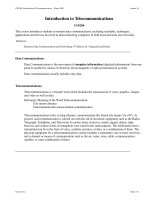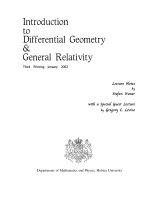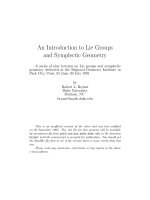Introduction to Analytic Geometry
Bạn đang xem bản rút gọn của tài liệu. Xem và tải ngay bản đầy đủ của tài liệu tại đây (631.58 KB, 3 trang )
Introduction to Analytic Geometry
Introduction to Analytic
Geometry
By:
OpenStaxCollege
1/3
Introduction to Analytic Geometry
(a) Greek philosopher Aristotle (384–322 BCE) (b) German mathematician and astronomer
Johannes Kepler (1571–1630)
The Greek mathematician Menaechmus (c. 380–c. 320 BCE) is generally credited with
discovering the shapes formed by the intersection of a plane and a right circular cone.
Depending on how he tilted the plane when it intersected the cone, he formed different
shapes at the intersection–beautiful shapes with near-perfect symmetry.
It was also said that Aristotle may have had an intuitive understanding of these shapes,
as he observed the orbit of the planet to be circular. He presumed that the planets moved
2/3
Introduction to Analytic Geometry
in circular orbits around Earth, and for nearly 2000 years this was the commonly held
belief.
It was not until the Renaissance movement that Johannes Kepler noticed that the orbits
of the planet were not circular in nature. His published law of planetary motion in the
1600s changed our view of the solar system forever. He claimed that the sun was at one
end of the orbits, and the planets revolved around the sun in an oval-shaped path.
In this chapter, we will investigate the two-dimensional figures that are formed when
a right circular cone is intersected by a plane. We will begin by studying each of three
figures created in this manner. We will develop defining equations for each figure and
then learn how to use these equations to solve a variety of problems.
3/3









